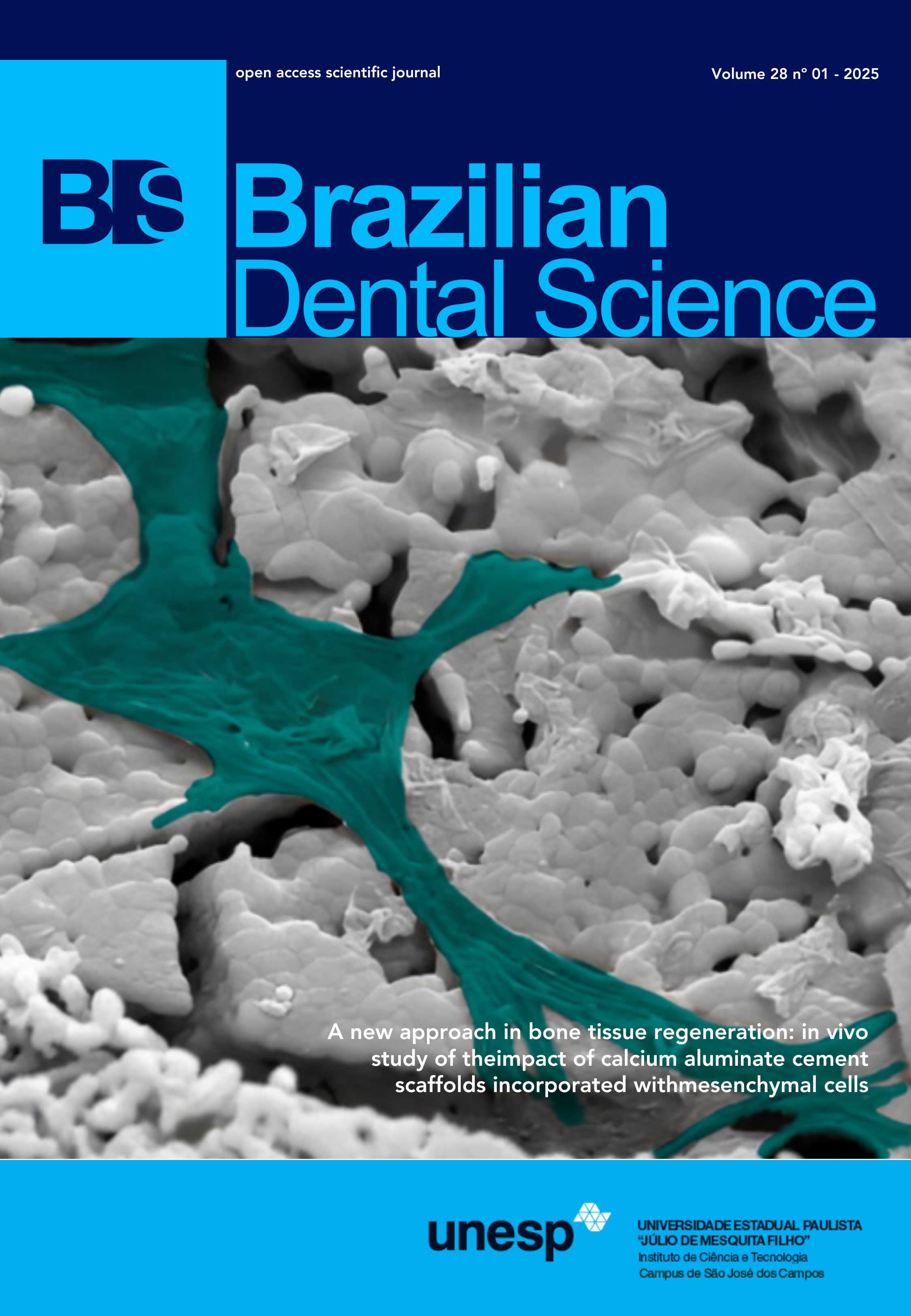Morphological analysis of gutta-percha points subjected to different treatments and influence on sealing the filling
DOI:
https://doi.org/10.14295/bds.2012.v15i3.800Keywords:
Peracetic acid, Chlorhexidine, Gutta-percha, Sodium hypochlorite, Dental leakage.Abstract
Objective: This study evaluated the morphological changes in scanning electron microscopy (SEM), which occur on the surface of gutta-percha points at times exceeded those recommended. Methods: 2% chlorhexidine (CLX), 2.5% sodium hypochlorite (NaOCl), 2%peracetic acid (PA) and 0.25% peracetic acid (SAP) solutions were used in periods of 1 minute, 30 minutes, 6 hours and 12 hours. Groups were divided according to the solution and disinfection period (n=12). Results: The results indicated that there was statistically significant difference between the solutions and periods tested. In 1 minute, all solutions do not differ from the control. After 30 minutes, the SAP significantly alter the morphology of the points. The test energy dispersive spectrometry (EDS) indicated that all the solution periods alter the chemical composition of gutta-percha points. The relationship of disinfection on microleakage of filling was also evaluated in groups that suffered disinfection for 12 hours. The SAP group showed statistically significant difference compared to control, because 100% of its roots showed infiltration. The other groups of CLX, NaOCl and AP, although not statistically significant, were respectively 9, 8 and 8 out of 12 of his roots with infiltration. Conclusion: Concluded that the disinfection process can cause morphological changes if the immersion period is exceeded and that, in addition to altering the chemical composition of gutta-percha, these solutions can influence the sealing of the filling.




